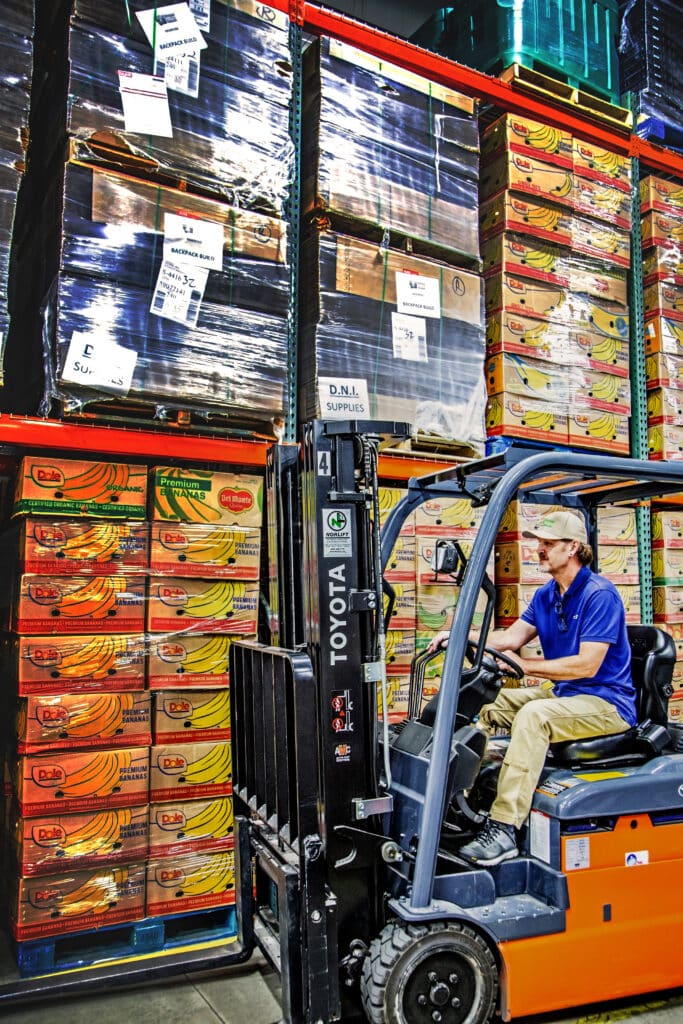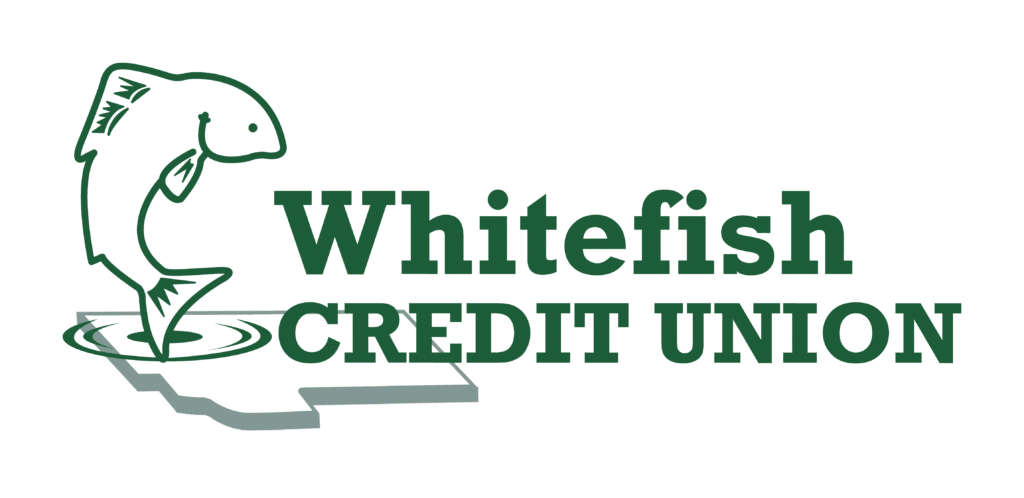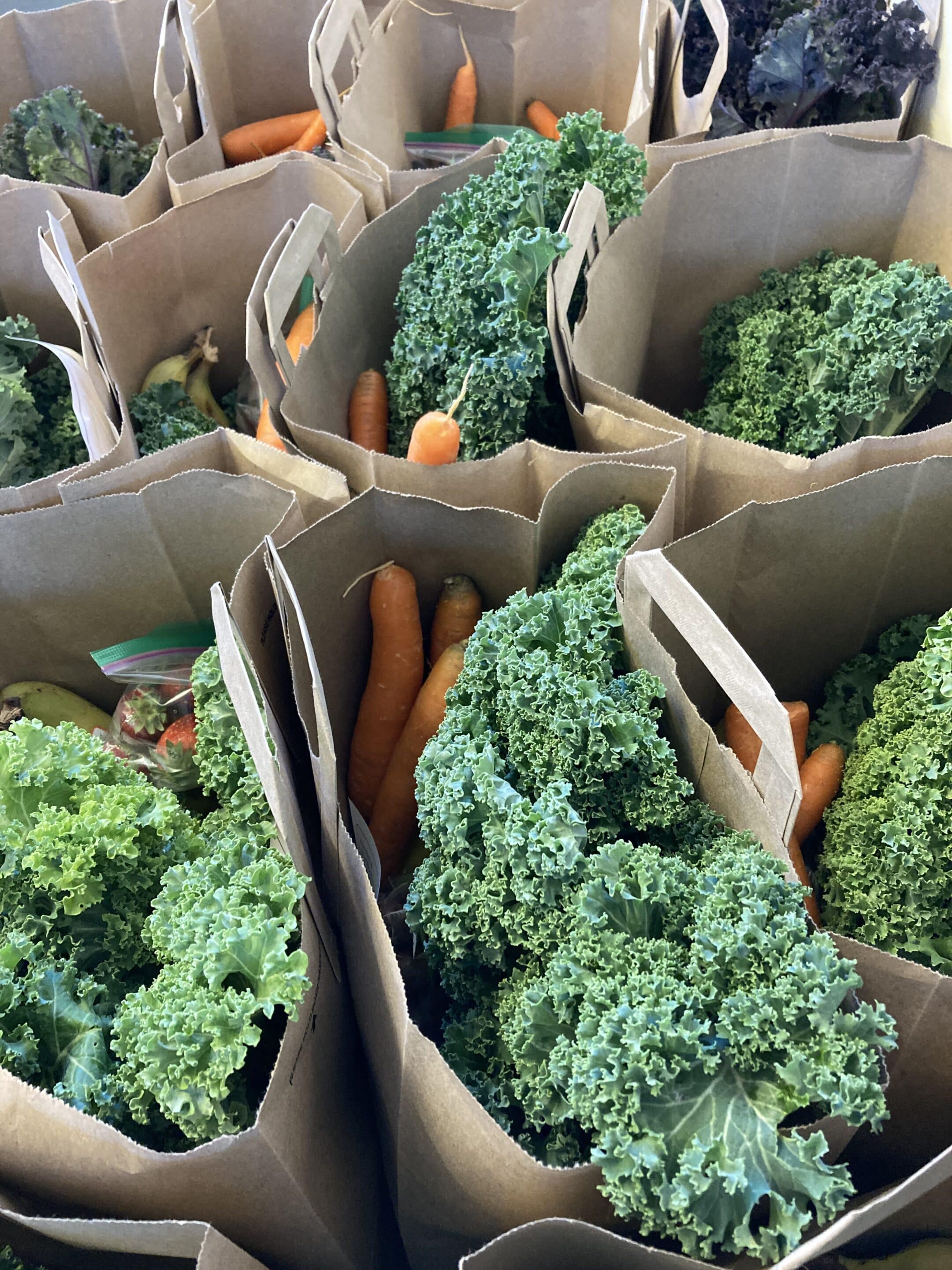Food banks and pantries across Montana are employing a surprising strategy to combat food insecurity in their communities–local food. During the COVID-19 pandemic, many food pantries relied on local producers to help fill the voids on their shelves, consequently finding that sourcing local food benefited not only the pantries but the community, farmers and ranchers, and the economy. Now, these pantries are taking steps to drive the presence of local food on all Montanans’ plates.
Although the pandemic years are behind us, many food pantries have not seen the decrease in demand they believed they would. “In the last two years alone, we saw double the need for food assistance in our communities,” says Sophie Albert, Executive Director of North Valley Food Bank (NVFB) in Whitefish, MT. Sophie attributes the increased need to several factors, including inflated food, gas, and housing costs.
Contrary to common belief, finances aren’t the only factor contributing to food insecurity, “the inability to access food consistently, resulting in reduced quality or a lack of nutrient-dense food.” Many Montana residents live in “food deserts,” where there is limited access to grocery stores or a variety of healthy food. These areas can be found in urban and rural settings, meaning that more than 1 in 12 Montanans are food insecure.
Elle Ross, Executive Director of Helping Hands Hardin (HHH) in Southeastern Montana, has witnessed this difficulty accessing food firsthand. “So many food access issues stem from just how vast our communities are, just the physical space between our communities.” During COVID, Elle often saw multiple households carpooling together to drive the multi-hour trip to the pantry.
Montana’s landscape also affects how food pantries acquire food. This is where the Montana Food Bank Network (MFBN) comes in. MFBN secures large-scale amounts of food through generous donations, grants, or wholesale, then breaks the bulk food into manageable, family-size portions and distributes them across Montana. In 2023, MFBN distributed 13,896,595 meals to 360 community food banks, pantries, schools, senior centers, shelters to end hunger, and other partners, including NVFB and HHH.

Despite delivering so much food throughout Montana, only a small portion is sourced and processed in-state. Brent Weisgram, Vice President & Chief Operations Officer at MFBN, says the nonprofit aims to change this. “One of the challenges in Montana is that we are a large agricultural producer of raw products. Meaning lots of cattle, barley, and wheat. But we don’t have food manufacturing facilities, per se.” Brent says that many produce growers are small-scale, and there aren’t facilities nearby to combine, process, and distribute their products.
This year, MFBN will break ground on a new facility in hopes of making strides toward solving this missing link. “One of the exciting things about the new facility is that it will allow us to expand the amount of local fresh produce and local agricultural commodities we source and distribute [in food banks],” says Brent. The facility will have a designated quarantine, inspection, and cleaning room, in addition to doubling the size of our current cooler and freezer spaces, a vital part of having a local food presence year-round since Montana’s growing season is so short.
While this new facility will increase the ability to get local food into food pantries exponentially, Sophie and Elle aren’t waiting until the ribbon’s cut to stock their shelves with local food. NVFB has already become a food hub in their region, running a rural pantry delivery program, providing a gleaning space and a certified prep kitchen for the community, as well as a Wild Game Processing Program for local hunters who wish to donate legally harvested game. They also collaborate with other pantries to pool resources and increase local purchasing power to make more significant bulk purchases from Montana businesses. Along with these resources, NVFB closes the loop by operating the Food Rescue Program, which partners with local businesses to keep consumable food out of the landfill by transforming food close to expiration into meals and composting unusable foods with Dirt Rich Compost.
HHH dreams of building similar capacity but, for the time being, is focusing its efforts in a different direction. During the pandemic, they started managing the local farmers market, ensuring farmers had a space to sell their products, and purchasing excess produce at the end of the market. This allowed farmers to stay in business and pantry shelves to stay stocked. These relationships have since grown into partnerships, allowing HHH to purchase directly from nearby producers. They have also added raised garden beds on site, which re-engage community members with their food sources, educate them about growing and eating nutrient-dense food, and provide a tasty snack for those walking by.
To support the health of your community and the presence of local food on all Montana plates, get involved by doing one or all of the following:
- Check to see if your pantry accepts fresh produce, and donate food from the farmers market or excess food from your garden.
- Donate legally harvested game through the MFBN Hunters Against Hunger Program.
- When purchasing shelf-stable products to donate to the pantry, look for Montana-made products.
- Support them financially. HHH purchases 80% of the food they distribute!
- Most pantries rely on volunteers, so consider donating your time!
- Talk with your local pantry about the best ways to support local food presence on their shelves.
This story is made possible with funding by:

Click here to learn more about the work Whitefish Credit Union does for members like North Valley Food Bank.
FIND MORE STORIES LIKE THIS ONE IN OUR LOCAL FOOD GUIDE!
